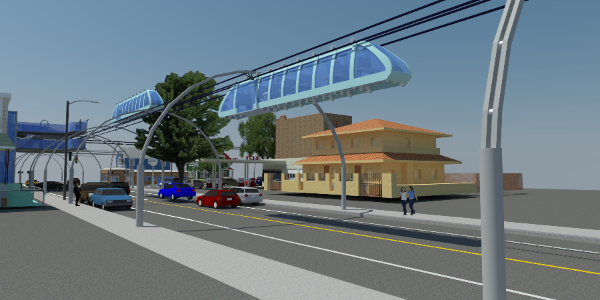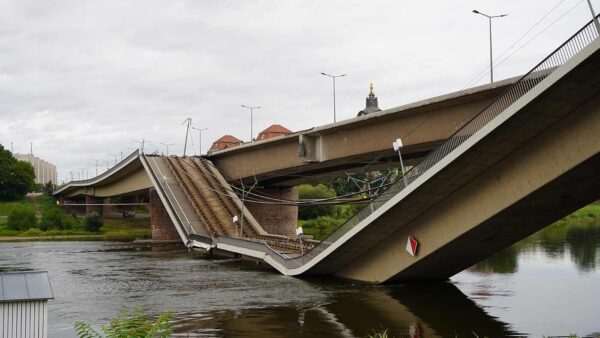A pitch for a lightweight mass transit system featuring tram cars that run along tracks suspended over busy roads has won a prize in a climate-oriented ideas contest run by the Massachusetts Institute of Technology (MIT).
The so-called “Caterpillar Train” (C-Train) was judges’ choice in the transportation category of this month’s MIT Climate CoLab competition, which encourages international collaboration on eye-catching solutions.
The idea for the elevated train was developed by Indian rail engineer Ashwani Kumar Upadhyaya and Jacob Innovations Inc. for use in residential areas as an alternative to expensive subways and conventional overground rail schemes.
The tram cars would run in mid-air above streets on tracks suspended by light arches. In one direction they would run on top of the track, but going in the other direction would hang from the track.

To conserve airspace and reduce weight, the C-Train’s carriages would contain limited standing room, as in an airliner cabin, with 10 to 12 seats in each car.
A train would arrive at each station every 10 seconds, with the entire system able to transport 3,600 passengers per hour, its developers said.
The system would be driverless, and upon boarding passengers would tell the computerised system where they want to stop.
Jacob Innovations said an average train car would cost only $30,000 and that the system would be noise and pollution free.

“The strength of the concept is its simplicity and its practicability,” co-developer Ashwani Kumar Upadhyaya told The Indian Express. “Some ideas are very good on paper, but not practicable. I guess we won because ours was both.”
He added: “Let’s hope the idea does not stay only on paper and we can build at least a prototype somewhere in the world. The next chapter will come after that.”
Images via Jacob Innovations Inc.
Comments
Comments are closed.







This is not exactly a new idea. See link below for a suspended rail Transit System that celebrated its 100th birthday in 2001.
https://www.schwebebahn.de/
Interesting to see what over 100 years of technical development could do to the appearance of the System!